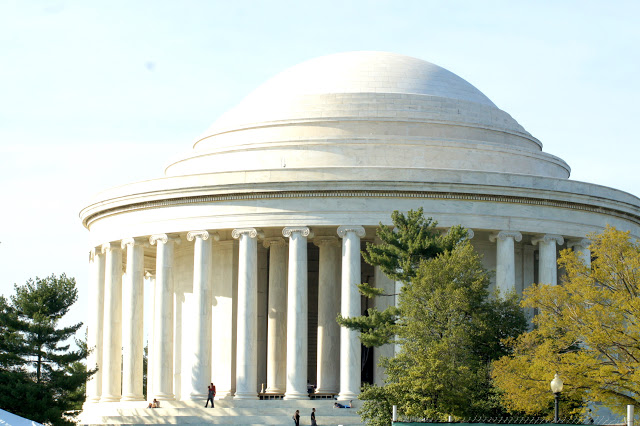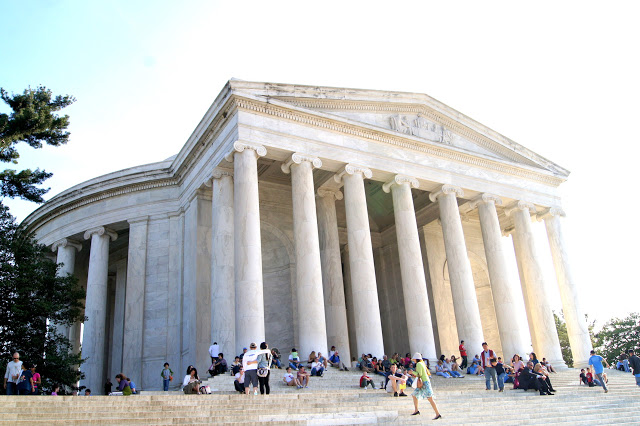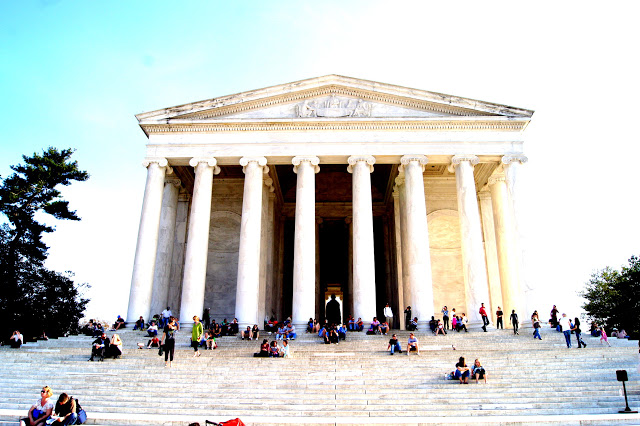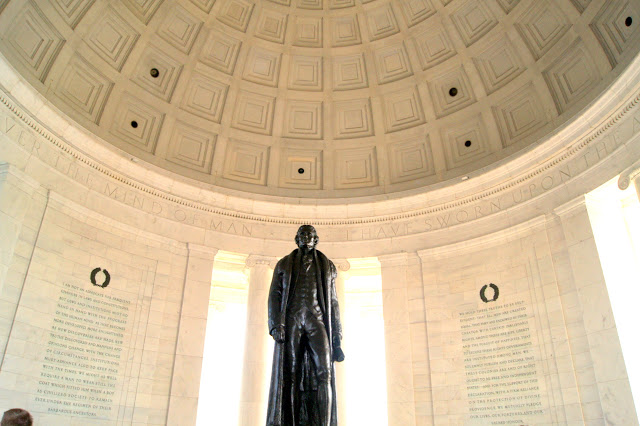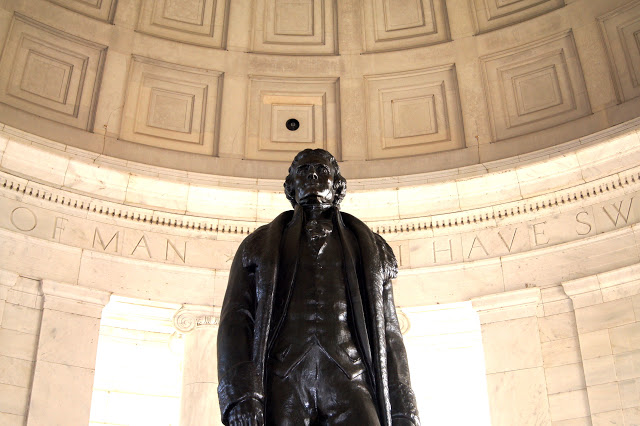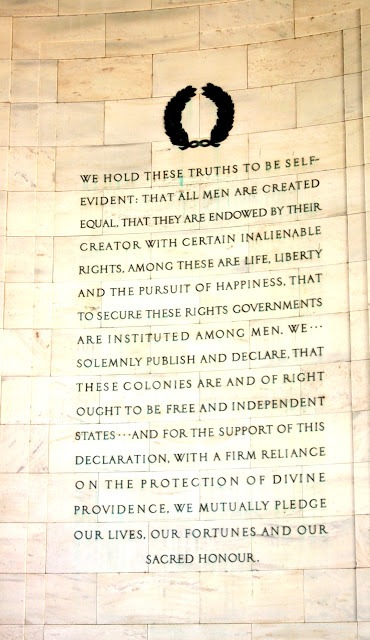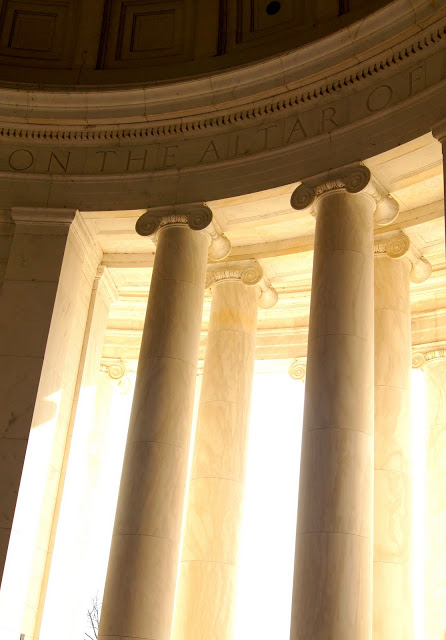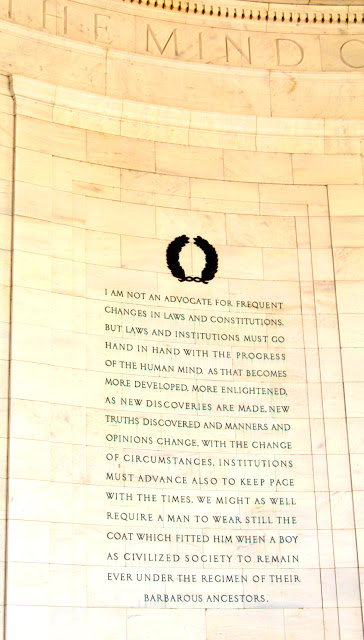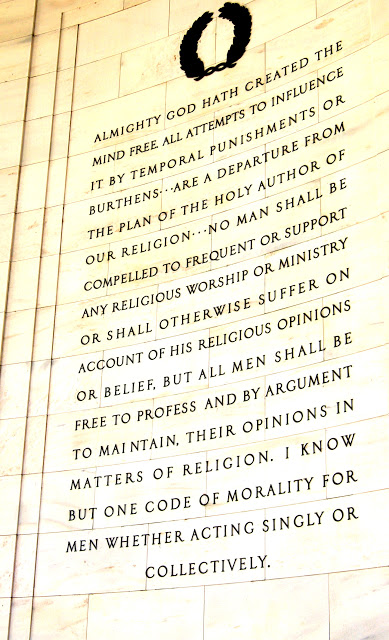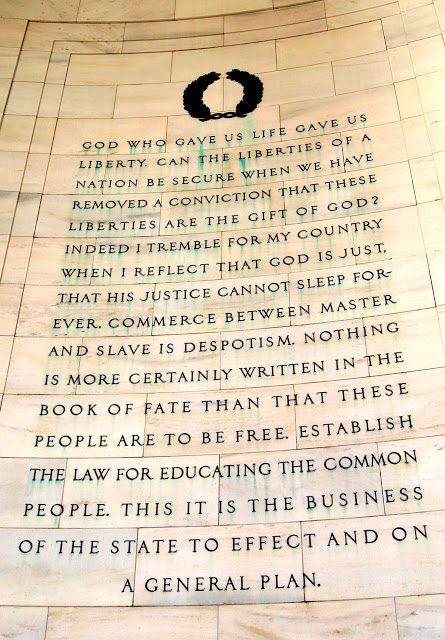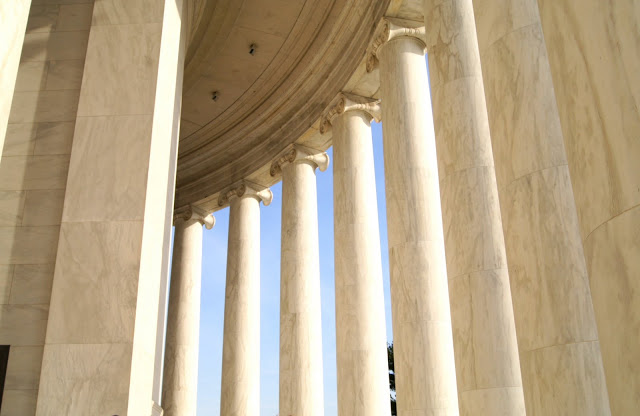A famous memorial for a famous and influential person, one of the Founding Fathers of American History. It is only fitting to have a memorial for such a brilliant mind and patriotic soul. The memorial was built by John Russell Pope. Construction began in 1939, the building was completed in 1943 and Jefferson’s statue was installed in 1947. It is ranked 4th on the List of America’s Favorite Architecture.
Many books have been written about Jefferson and it would take me several blog posts to fit all the info we have about him today. So I am going to just going to give you some tidbits about him and his life and provide the link if you want to read more facts about him.
* Thomas Jefferson was a Virginia lawyer who was a delegate to the Continental Congress, the writer of the Declaration of Independence, a governor of Virginia, ambassador to France and Secretary of State under President George Washington.
* In addition to these achievements, Thomas Jefferson was elected the third President of the United States, serving two terms in this highest office in the land.
* This list of Facts on Thomas Jefferson contains basic things such as birth and death dates, marriage dates, number of children and offices he held. It also contains some interesting and less well known Facts on Thomas Jefferson.
http://www.revolutionary-war-and-beyond.com/facts-on-thomas-jefferson.html
http://en.wikipedia.org/wiki/Thomas_Jefferson
One of his most famous quotes that are se relevant to today’s America: “The government is best that governs least.”
One of the reasons I like Thomas Jefferson is because he loved books!!!!!
The Jefferson memorial was designed after the Pantheon in Rome.
The silhouette in the middle of the building is that of the imposing statue of Jefferson, sculpted by Rudulph Evans, showing Jefferson looking out toward the White House.
The interiors of the walls are engraved with Jefferson’s writings. The most prominent are the words just below the inside of the dome: “I have sworn upon the altar of God eternal hostility against every form of tyranny over the mind of man.” This sentence is taken from a September 23, 1800, letter by Jefferson to Dr. Benjamin Rush wherein he defends the constitutional refusal to recognize a state religion.
An excerpt of the Declaration of Independence, written in 1776.
An excerpt from a letter to Samuel Kercheval, dated July 12, 1816.
An excerpt from “A Bill for Establishing Religious Freedom, 1777”, except for the last sentence, which is taken from a letter of August 28, 1789, to James Madison.
A combination of sentences from different writings of Jefferson.
An impressive memorial, an impressive man and it causes one to reflect more seriously on the founding fathers and what they sacrificed for America to have the freedoms that she takes for granted these days.

